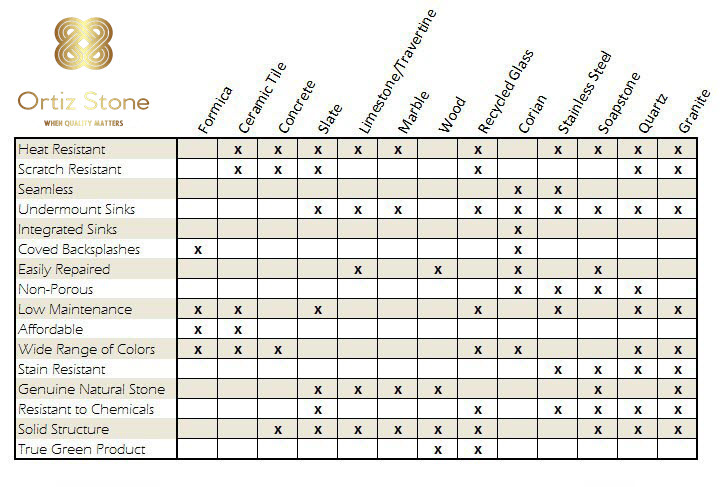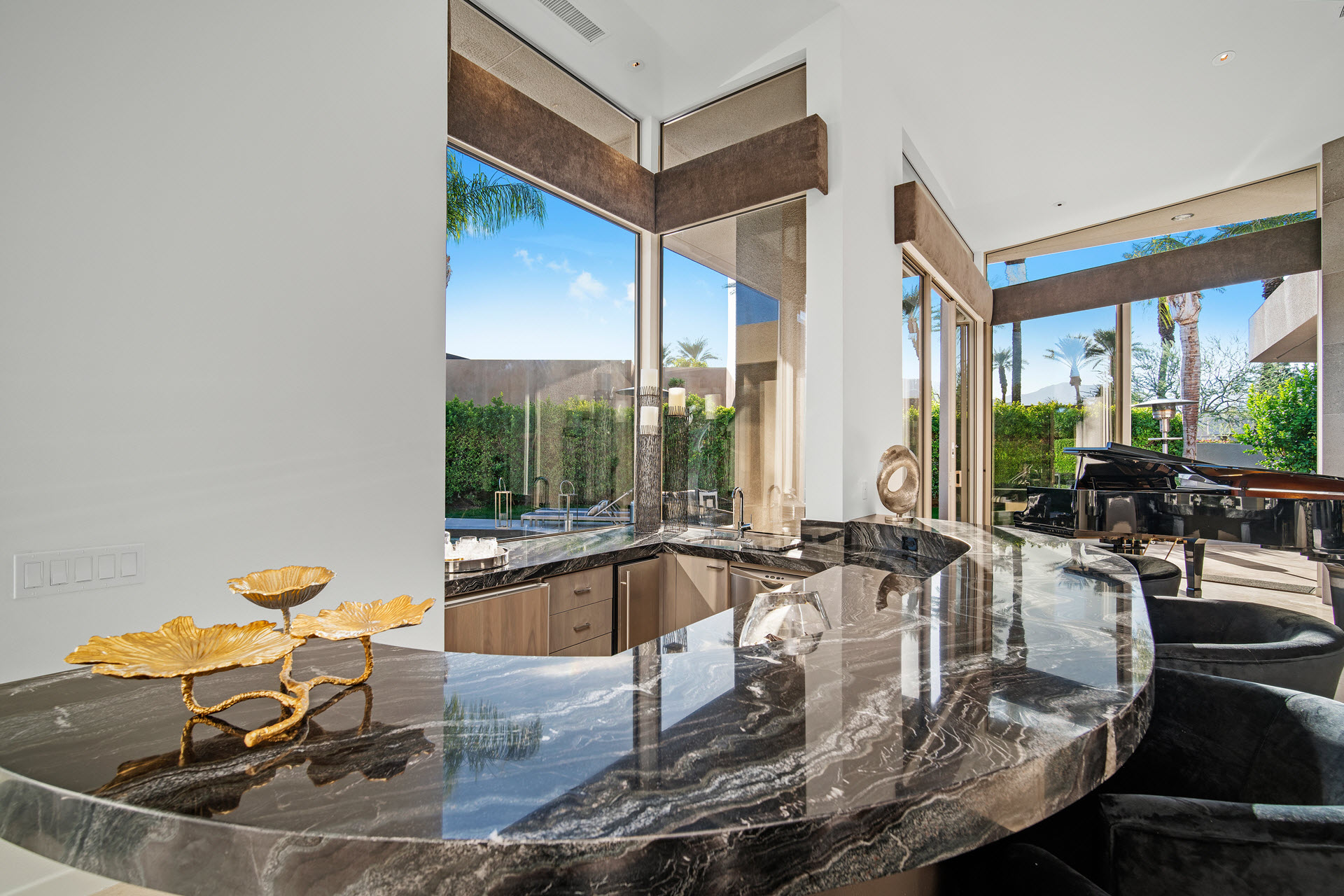We Are Ortiz Stone
When Quality Matters

License No. 995007
What we are proud of
108 Bar
Completed Projects108 Powder Room
Completed ProjectsBook Matched Waterfall Center Island
Completed ProjectsComplete Bathroom
Completed ProjectsComplete Wall Detail
Completed ProjectsCustom Bathroom Detail
Completed ProjectsCustom Coffee Table
Completed ProjectsCustom Fireplace
Completed ProjectsCustom Kitchen
Completed ProjectsCustom Kitchen All Book Matched Stone
Completed ProjectsCustom One Piece Sink
Completed ProjectsCustom Pool Tile
Completed ProjectsCustom Pool With Swim Up Bar
Completed ProjectsCustom Table Base
Completed ProjectsEntertainment & Fireplace Surround
Completed ProjectsFireplace
Completed ProjectsFireplace Surround
Completed ProjectsOutdoor BBQ Area
Completed ProjectsWalk In Shower
Completed ProjectsWaterfall Counter Top
Completed Projects
Education
Countertop Comparison, Finding the Right Surface
Can’t decide which countertop surface is best for you? Well, that is not surprising considering the numerous countertop surfaces available. Great Lakes Granite & Marble takes pride in helping you find a stylish surface that resists stains, scratches and spills and fits your budget! Call and talk with one of our highly skilled and trained experts today.
COUNTERTOP COMPARISON CHART

GRANITE VS. QUARTZ COUNTERTOPS
Pros
Granite and quartz surfaces are very durable and capable of lasting a long time 50 years. They are both heat, scratch, chemical and stain resistant. Quartz surfaces are engineered from natural quartz while granite, in and of itself, is a natural stone. Both surfaces are low maintenance. While granite is limited to all the colors nature has produced, quartz is artificially colored. While granite and quartz are in the upper tiers of cost, they will give you the longevity and durability associated with their price. Granite will take a hot pot while quartz is less resistant to high heat.
Cons
Quartz is a manufactured stone and it is hard to duplicate the veining and pattern look you get from genuine marble or granite. Quartz is approximately 20% to 40% more expensive than granite. Granite can be cold to the touch but will also make it ideal to prepare baking goods on.
GRANITE VS. MARBLE COUNTERTOPS
Pros
Both Granite and Marble are made of genuine natural stone which means each slab is unique and beautiful. Marble is famous for it’s veining, which has led to the term “marbling.” Marble also ages beautifully. Granite and marble come’s in a large variety of colors and the options and patterns are endless.
Cons
Marble is more porous and should have a quality sealer to reduce staining. Because the minerals that compose marble are sensitive to certain chemical agents, it is important to wipe spills away quickly. Anything acidic will leave an etch mark if left on the stone for too long. Marble needs to be cared for in the same manner a fine piece of wood is cared for.
CORIAN VS. GRANITE COUNTERTOPS
Pros
Corian is man-made and created by combining minerals and acrylics. Corian offers more accessories such as integrated sinks and coved backsplashes. Both come in a wide variety of colors. Corian is easier to get in specific colors than granite. Corian and granite are comparable in the cost of the original installation.
Cons
Granite offers many more pros than Corian in that fact that it is heat, stain, scratch and chemical resistant. Granite also requires less maintenance then Corian and other solid surface materials. Cracks and scratches are inevitable in Corian and though they can be repaired Corian can also become damaged if exposed to heat. Corian slabs are 30″ wide, so if you have a wide island or peninsula, or an usual shape (id. boomerang), it will require more seams than granite or quartz surfacing. The seams are inconspicuous but not invisible.
Choose An Edge
You thought the hard work was over when you selected the countertop material, color and pattern that you wanted for your kitchen. Then you are asked “what edge would you like to go with your countertop?” You soon learn the choices there are plentiful as well, who knew there were over a dozen countertop edges to choose from? In any kitchen design it is often the details that set it apart, and choosing your countertop edge is not a detail you want to overlook. The edge can complete the style of your dream kitchen. Let’s look at the various options and understand how to complement the style of your kitchen, as well as your budget.
Perhaps the first logical step is to choose between a streamlined, clean look or a more rounded, decorative look. Let’s first explore the available Standard Edges we offer at Ortiz Stone.
Standard Edges
The first type of edges we will explore are standard edges, and there are still choices within this category. Standard edges can be either straight or curved and can complement any kitchen style.
In a clean-lined kitchen design, a straight edge often fits the profile of the kitchen best. If you have chosen to highlight another material in your kitchen, such as an eye-catching tile or beautiful appliance, a straight edge countertop will blend with the kitchen rather than attract attention or steal the show. Despite their name, straight edges are not sharp, the corners are slightly rounded to protect the stone from damage. You even have the flexibility to customize the amount of rounding to best fit the style of your kitchen.
In a more traditional design, you may choose a curved edge to pair nicely with your crown molding or another design feature of the kitchen. The options in curved edges are plentiful and we’ll explore a few of them below.
FLAT POLISH
Flat Polish is a simple, clean, and classic edge profile. We often see a flat polish in a more contemporary design.
FULL BULLNOSE
There are two types of bullnose edges, the full and half bullnose. The bullnose features a rounded edge giving a soft touch to any design. It is considered a timeless classic and commonly seen in a traditional design. The full bullnose makes the edge appear thinner.
QUARTER ROUND
With the quarter round edge, the top edge of the granite has a slight radius, about the diameter of a pencil. This gives the countertop edge a sleek look, pairing nicely with a traditional design.
BEVEL
A bevel edge features a subtle, angular edge. A standard bevel edge is a 45-degree angle. At Ortiz Stone, we can customize the angle as well as the width of the bevel edge. For example, we could do a 20, 45, 66-degree angle and a width anywhere from .25” to 2.5” depending on the material. This customization gives our clients design flexibility that can enhance the look of their kitchen design. The beveled edge typically pairs nicely with a contemporary design.
HALF BULLNOSE
The Half Bullnose also features a rounded edge, pairing nicely with a traditional design. The half bullnose give the edge a thicker appearance.
Specialty Edges
With standard edges all being beautiful, it’s hard to think we could top that. But if high design or elegance is your goal, we have a variety of specialty edges we’ll explore here.
DOUBLE QUARTER ROUND
The double quarter round edge features a pencil round edge on the top and bottom edge of the granite. This will give the granite a bit of a thinner look in comparison to a half bullnose or polish edge. This thinner appearance is cosmetic only and can be created based on the edge style. This edge pairs nicely with a traditional design.
MITRED DROP APRON
A mitred edge is actually assembled from two pieces, and the edge size can be customized. At Ortiz Stone, we pride ourselves on a beautiful mitred edge. If the material is veined, we can match the veins to turn and go right down the drop apron, giving you a consistent look. The other way to create this appearance is a double laminated edge where two pieces of granite are glued together. The downside with a double laminated edge is that you may see the seam, and it is very difficult to match the vein on the countertop. Therefore, we’ve taken the approach of the mitred drop apron vs. the double laminated edge.
OGEE
The Ogee edge has a classic, elegant look, that pairs nicely with a traditional kitchen. In comparison to the Dupont, the Ogee has a concave radius. If you are curious about the name Ogee…you might like the story of where it came from. We haven’t much-discussed edge pricing in this article…but as with most things in life, the fancier the edge, the “fancier” the price. Most edge styles have come from the Italians, but they don’t name them, they just use numbers. When people would see this edge and then ask for pricing, the typical response was….. “O Gee!” Hence the name, Ogee!
TRIPLE PENCIL EDGE
This one actually was named by the Italians. Another name for a quarter inch radius edge is a pencil edge. The triple pencil is 3 – 6mm radius or three-quarter rounds all layered on each other.
DOUBLE BEVEL
Just like we discussed with the bevel edge above, the double bevel edge can also be customized with difference size angles and width. This allows the homeowner to customize the appearance of their granite edge. The double bevel may catch light on both sides of the bevel, creating an impact in your kitchen. This pairs nicely in a traditional design.
DUPONT
The Dupont edge has a convex radius. It is often referred to as an inverted Ogee edge. This pairs nicely in a traditional style kitchen.
DOUBLE OGEE
Stands to reason the Double Ogee would be even “fancier” right? You guessed it! Also featuring a concave radius (actually two of them), more shallow than on the ogee. Again, this pairs with a traditional kitchen.
ROCK FACE or CHISELED EDGE
Yet another style is the rock face or chiseled edge profile. This edge exposes the raw stone giving your countertop a more natural or rustic appearance. Some people perceive this edge as being sharp or worry about it snagging clothes, in our experience, we haven’t had any issues with damage caused by this edge. It simply gives your project a more rustic appeal.
"YOU'LL PROBABLY ASK..."
The edges with the * can be modified to exaggerate their profile if desired for a custom look.
Some exotic materials require more fabrication care. With those edges, we advise against the more intricate specialty edges such as the Triple Pencil, Double O’Gee, or Triple Lindy. Your Project Manager at Great Lakes Granite and Marble would be able to advise you if this comes into consideration with the material you’ve chosen for your project.
In our experience, the durability is consistent among all of the different edge styles.
Straight Edge, Curved, Decorative, Custom….so many options. One way to start narrowing your choices down are evaluating your kitchen style and determining what might pair best – contemporary or traditional design? Take a look at the profiles in your kitchen, for example, the profile feature in the drawer or door front and look to coordinate that with your countertop edge style. You can work to reflect the profile features of your cabinet design in your countertop edges so it looks like you had one person design both kitchen features.







































